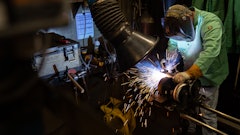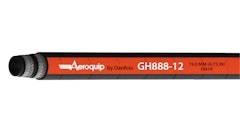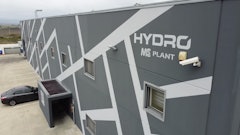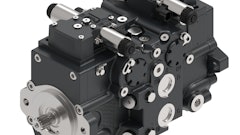Accumulators are among those essential components that every one seems to use but no one talks about. Lately, however, piston and bladder accumulators have been moving from an afterthought to an enabling technology that could help OEMs meet emissions regulations while providing the power, comfort and response customers expect.
“If you look at the world’s top needs, after water and food, energy is high up there. That is what accumulators are good at working with,” says Mike Schubert, marketing manager, Parker Hannifin, Global Accumulator Div., Machesney Park, IL. “They store energy as well as modulate it, control it, and smooth it out. People have used accumulators for years in various functions.”
Accumulators are accepted as a cost-effective bandage to a hydraulic system’s ailments, helping to reduce conditions such as line shock, which can prematurely wear out expensive components. Accumulators may also compensate for fluid lost through internal leaks in cylinders and valves.
Their acceptance as a solution to achieve energy savings and emissions reduction goals, means that accumulators are getting more respect these days. “Rather than thinking about them at the end of the design cycle, engineers are starting to consider accumulators in the feasibility stages of product design,” says Schubert.
Engineers already know they will install an accumulator on the machine and are bringing suppliers into a program earlier in the process. The machine can be designed with the accumulator’s placement considered from the start.
“Ideally, engineers should be able to design machines with engines and transmissions that operate at maximum efficiency all the time,” says Schubert.
Upcoming Tier 4 regulations have manufacturers taking a look at how they can make equipment better while reducing emissions. Accumulators provide a way to store energy when not using peak power, which may permit OEMs to use a smaller engine.
“If you look at the duty cycles of a vehicle, the hardest part is accelerating from stop,” says Schubert. Accumulators could provide just enough energy to assist with the initial acceleration of a telehandler boom, for example. “Having an accumulator in the system to help with that launch makes a big difference in the power demand of the vehicle, and allows you to smooth out the power curve.
“An accumulator is not going to solve everything, but it is certainly higher on the food chain nowadays,” he says. “As an accumulator manufacturer, this is the kind of thing we like, being able to get into the process at the design stage. With a better understanding of the goals, we can help develop features that the customer expects from a vehicle.”
Accumulators are nearly infinite in design variability and can therefore be made to fit the space available for a reasonable price and still get a lot of useful energy out of it.
All this positive attention has the accumulators themselves evolving, particularly to save weight. Traditionally, the casings have been made of steel. In order to reduce weight, composites and other alternative materials are gaining favor.















